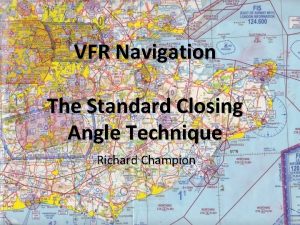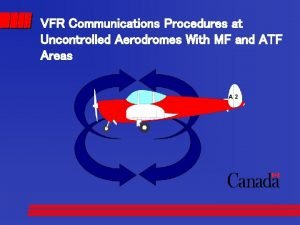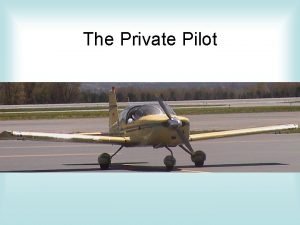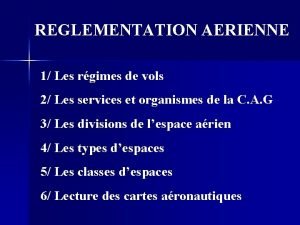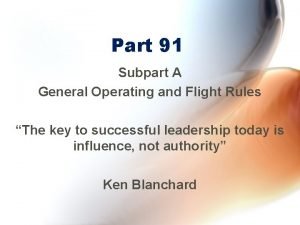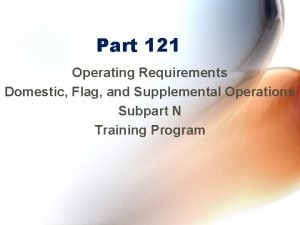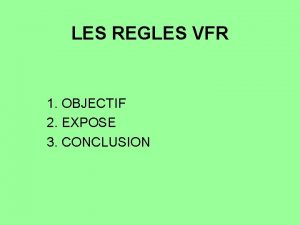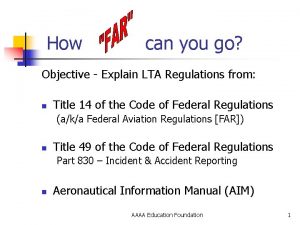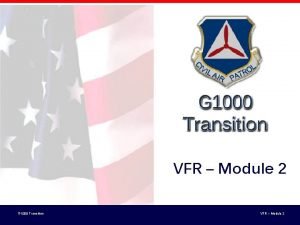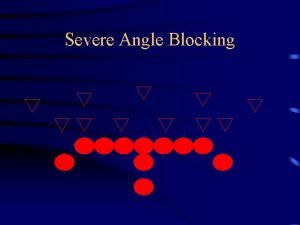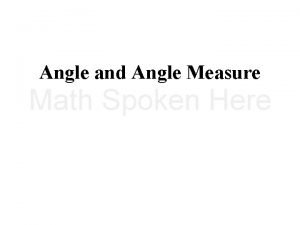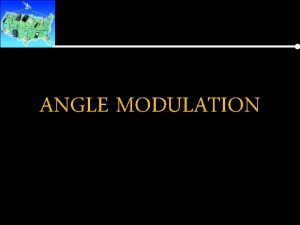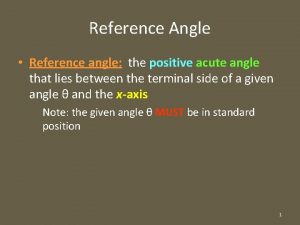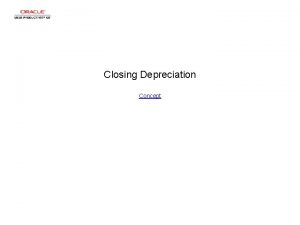VFR Navigation The Standard Closing Angle Technique Richard









- Slides: 9

VFR Navigation The Standard Closing Angle Technique Richard Champion

The Standard Closing Angle Technique • Aim – To learn how to get back on to your planned course during a cross country flight. • Objective – By the end of this briefing, you should be able to use the Standard Closing Angle technique to return to your planned course when your map reading indicates you have deviated. • Airmanship – Good navigation, avoiding airspace busts • Agenda – – – Background Advantages/Disadvantages How to use it Examples Summary

Background • The Standard Closing Angle is a heading change that will bring you back onto your planned course in the same number of minutes as you are miles off course. • Mathematically, it is calculated by dividing 60 by the aircraft’s True Air Speed (TAS) expressed in nautical miles per minute. A table can be prepared: - • Angles of more than 30° are undesirable, so for speeds of less than 120 kts, the Modified SCA is used and the new heading is flown for twice the time – i. e. 2 x the number of miles off track

Advantages/Disadvantages Advantages • Simple – all you need to remember is the modified SCA for your normal cruise TAS • Quick – Gets you back onto your planned track as soon as possible • No mental maths required – Leaves you free to fly the aircraft • It Works! – It is a proven technique, approved by examiners. Disadvantages • Not perfect – The calculations are not 100% correct (because based on TAS, not groundspeed), so some purists object. – Does not work for very large drift errors.

How do you use it 1. Mark your actual position on your chart. 2. Estimate or measure the number of miles off course. 3. Add or subtract the modified SCA to your heading: – – Add if you are turning right to regain course Subtract if turning left 4. Turn onto heading and note time (or start watch). 5. Fly for 2 minutes for every mile off course. 6. During this time, analyse the reasons for being off course: – – Forecast wind incorrect? Bad flying? Misaligned DI? Lucky horseshoe left next to compass? 7. When the time is up, turn back onto original heading, adjusted if necessary to take into account the reason for the original deviation. 8. If you are too close to your next turning point to allow 2 minutes per mile, double the angle and halve the time.

Example 1 • TAS 90 Kts = SCA 20°, Heading 051°, Time for leg 32 mins • After 8 minutes: – Actual Position Lewis, 2 Nm off track • Turn on to new heading = 031° (=051° – 20°) • Time on new heading – 4 mins (ie 2 Nm x 2) 350/20 m n 2 • Actual position- Uckfield, back on track • Consider reason for being off track – (DI misaligned with compass by 15°) • Realign DI, Turn back to 051° • Continue Flight

Example 2 • TAS 90 Kts = SCA 20°, Heading 051°, Time for leg 32 mins • After 16 minutes: – Actual Position Crowborough, 3 Nm off track • Turn on to new heading = 071° (=051° + 20°) • Time on new heading – 6 mins (i. e. 3 Nm x 2) m 3 n • Actual position- Bewl, back on track • Consider reason for being off track – (Wind not as forecast, less drift than expected) • • Turn back to 051°. Adjust for lower drift (+5°) New heading 056° Continue Flight 350/20

Example 3 • TAS 90 Kts = SCA 20°, Heading 051°, Time for leg 32 mins • After 24 minutes: – Actual Position 6 Nm off track • Consider turn to 031° (=051°- 20°) – But, time required on new heading – 12 mins (i. e. nm 6 Nm x 2) 6 – Too close! Only 8 minutes left to run. • Double the angle, halve the time. • Turn on to 011° (=051° - 40°) • Fly for 6 minutes (ie 6 nm x 1 min per mile) • Actual position– 2 mins from Headcorn. 350/20

Summary • We have learned about: - – What the Standard Closing Angle is – How it is calculated. – The advantages and disadvantages to the SCA technique. – Using the modified SCA for TAS less than 120 kts. – How the SCA is used in flight to regain planned track. • Now memorise the (modified) SCA for the normal cruise TAS for your aeroplane. It is all you need to know in order to fly an accurate cross country. • Do your FREDA checks !
